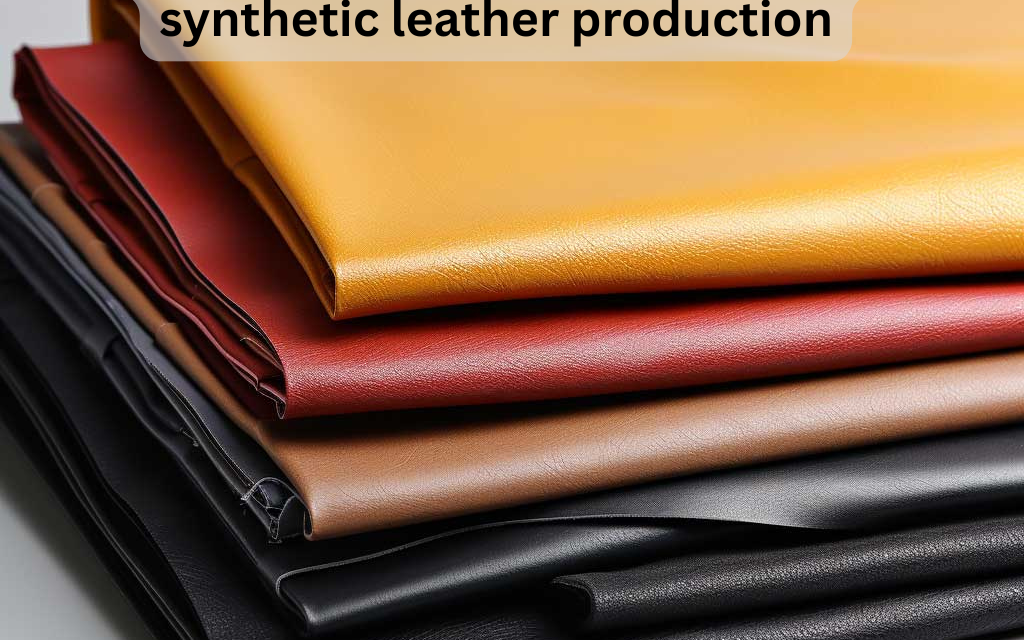Synthetic leather production, while widely adopted due to its affordability and versatility, poses several safety concerns related to environmental impact, worker health, and product usage. Below are the key safety concerns associated with synthetic leather production:
1. Chemical Exposure
- Toxic Chemicals:
- Production of synthetic leather involves the use of chemicals like polyurethane (PU), polyvinyl chloride (PVC), and plasticizers (e.g., phthalates).
- Workers may be exposed to toxic fumes, especially during the heating and curing processes.
- Dioxins from PVC:
- During PVC production or incineration, dioxins (toxic carcinogenic compounds) can be released, posing serious health risks to workers and the environment.
- Solvent-Based Adhesives:
- The adhesives and coatings used in synthetic leather may contain volatile organic compounds (VOCs) that can cause respiratory problems, headaches, and long-term health issues.
2. Air Pollution
- Emission of VOCs:
- The manufacturing process releases VOCs into the atmosphere, contributing to air pollution and potentially affecting the health of workers and nearby communities.
- Greenhouse Gases:
- Synthetic leather production relies on petroleum-based materials, leading to significant carbon dioxide emissions.
3. Health Risks to Workers
- Respiratory Issues:
- Inhalation of chemical fumes during production can lead to chronic respiratory diseases, including asthma and bronchitis.
- Skin Irritation:
- Direct contact with chemicals like solvents, plasticizers, and stabilizers can cause skin irritation or burns.
- Long-Term Health Concerns:
- Prolonged exposure to phthalates and dioxins has been linked to cancer, hormone disruption, and reproductive issues.
4. Fire and Explosion Hazards
- Flammability:
- Many chemicals and solvents used in synthetic leather production are flammable, increasing the risk of fires.
- Dust Explosions:
- In facilities where fine polymer or PVC dust is present, there is a risk of dust explosions if proper precautions are not taken.
5. Waste Management Challenges
- Non-Biodegradable Waste:
- Synthetic leather production generates waste materials that are not biodegradable, leading to long-term environmental pollution.
- Hazardous Waste:
- Improper disposal of chemical byproducts can contaminate soil and water sources, posing risks to ecosystems and human health.
6. Water Pollution
- Chemical Runoff:
- Wastewater from production facilities can contain harmful substances, including plasticizers, stabilizers, and colorants, leading to water pollution if not properly treated.
- Contamination:
- PVC production often uses chlorine, which can result in the formation of harmful chlorinated byproducts in wastewater.
7. Worker Safety in Developing Countries
- Lack of Regulations:
- In regions with weak labor and environmental laws, workers may not have adequate protective equipment or training, increasing their exposure to harmful chemicals.
- Poor Ventilation:
- Many factories lack proper ventilation systems, compounding the risks associated with inhaling toxic fumes.
8. Product Safety Concerns
- Phthalates in Finished Products:
- Synthetic leather, especially PVC-based, may contain phthalates, which can leach out over time. These chemicals are linked to endocrine disruption and developmental issues, particularly in children.
- Toxic Off-Gassing:
- New synthetic leather products can release VOCs into indoor environments, which may cause discomfort or health issues like headaches and dizziness.
9. Energy Consumption
- High Energy Demand:
- Producing synthetic leather requires significant energy inputs, particularly in the processing of polymers, leading to indirect environmental and safety concerns related to energy production.
10. Sustainability Concerns
- Fossil Fuel Dependency:
- The reliance on petroleum-based raw materials for PU and PVC contributes to the depletion of natural resources and increases the carbon footprint.
- Microplastic Pollution:
- During production and use, synthetic leather may release microplastics, which can contaminate air, water, and soil, impacting both ecosystems and human health.
Mitigation Strategies
To address these safety concerns, manufacturers can adopt the following measures:
- Switch to Safer Materials:
- Use water-based PU instead of solvent-based PU to reduce VOC emissions.
- Explore bio-based or plant-based alternatives to traditional synthetic leather.
- Worker Protection:
- Provide personal protective equipment (PPE) like masks, gloves, and goggles.
- Install effective ventilation systems in production facilities.
- Conduct regular health check-ups and training programs for workers.
- Emission Controls:
- Implement air purification systems to capture VOCs and toxic fumes.
- Comply with environmental regulations like REACH and EPA standards.
- Wastewater Treatment:
- Treat industrial wastewater to remove harmful chemicals before release.
- Energy Efficiency:
- Use renewable energy sources and optimize manufacturing processes to reduce energy consumption.
- Circular Economy Initiatives:
- Develop recycling programs for synthetic leather waste to minimize environmental impact.
Conclusion
The production of synthetic leather poses significant safety concerns related to environmental pollution, worker health, and product safety. However, with stricter regulations, advanced technologies, and sustainable practices, manufacturers can mitigate these risks and produce synthetic leather more safely and responsibly.
Hashtags
#SyntheticLeatherSafety #FauxLeatherConcerns #EcoFriendlyManufacturing #ArtificialLeatherRisks #VeganLeatherProductionIssues #SustainableLeatherChallenges #HealthAndSafetyInLeather #SyntheticMaterialImpact #FauxLeatherSafetyStandards #LeatherProductionRisks







